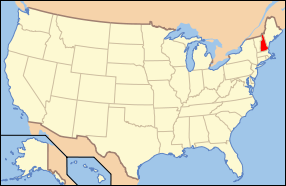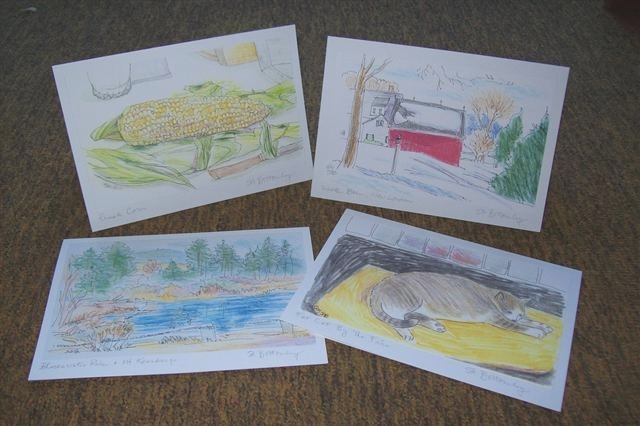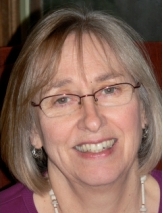In 1962, Seattle, Washington hosted a World’s Fair. This tower, the Space Needle, was built for the Fair. (Washington state is not to be confused with the nation’s capital, Washington, DC, approximately 3000 miles east.) It was constructed to withstand earthquakes, and it has done that.
At the time, it was the tallest structure in North America west of the Mississippi River. It is 605 feet or 184 meters high. I think of it as America’s Eiffel tower. The top has recently been repainted Galaxy Gold. It looks orange to me. We were visiting a friend in Seattle and this is the view from her apartment window. The outside windows are reflected in the wavy patterns in the building on the far right.
A short walk from our friend’s apartment led us to the famed Pike Place Market, established in 1907. It is a huge sprawling area. We walked around only in the top area featuring flowers and crafts. A grouping of sunflowers peeks out at the far right, and the musician fills the air with sweet notes of a hammered dulcimer. It was crowded so I drew between the people. Sur La Table is a kitchen supply store.
I have never seen such gorgeous flowers at such good prices too. I read that most flower growers are Hmong refugees from Southeast Asia. We didn’t have time to go to the fish market and witness the famous fish throwing.
The market includes housing for more than 500 people, mostly low income. There are social services included such as a clinic and day care center. None of this is apparent to a tourist wandering around the stalls.
The streets in Seattle are incredibly steep, and therefore driving was a fun challenge.
From Seattle, we drove south to Portland, Oregon. Every so often I would yell out “volcano”. The weather was clear so we saw them all: Mt Baker, Mt Rainier, Mt Saint Helens, Mt Hood, and Mt Adams. The entire west coast of the U.S. is an active seismic area.
We lived in Washington state a looong time ago, during our graduate student era. We climbed to the top of Mt. Saint Helens before she blew her top off in 1980. She used to be the most perfectly cone shaped mountain. No more. Naturalists have had a field day watching the local ecology reconstitute itself.
The above drawing was done from the window of our rented apartment in Portland. Try airbnb.com some time when you are looking for housing during a trip. These condos were built along the Willamette River and really really close to the Broadway Bridge. I am very fond of drawing a view from a window when traveling.
Portland is known for innovative urban design, bicyclists, and breweries. You see the bikes on the bridge, and behind the bridge is a brewery. Portland (and Seattle) is also known for rain, mist and cloudy weather, but not in the summertime. We had none of that in August. You see the sharp shadows above.
Sometimes I ignore shadows when I draw. In this case they were important to convey both the 3D volume of the unusual building shapes, as well as the weather.
On our Saturday In Portland, our hosts took us to the Farmer’s Market on the urban campus of Portland State University, or PSU. We split up to buy differing food options. After my delicious lunch of Oregonian salad, I drew this klezmer band. It is Eastern European Jewish Folk music. They were mesmerizing.
I draw musicians whenever I can, as it is fun to combine two art forms. As I drew this, my family and friends debated whether I was actually lost, and when I might return. I was right where they left me.
In the Chinatown district of Portland, the Lansu Garden encompasses an entire city block. It was opened in 2000 after two years of construction by 65 Chinese workers from Portland’s sister city of Suzhou.
Suzhou, known as the Garden City, has a two thousand year old tradition of formal walled gardens that replicate nature in miniature. Marco Polo pronounced it “a very great and noble city”. The basic elements are water, mountains, plants and animals, architecture and poetry. The pitted limestone rocks imported from China are in the right side of the drawing. Other details are koi, lilies, and lotus plants.
I am fortunate to have visited Suzhou in 2006. It was so enjoyable to see it again, in miniature. It was so very warm while I was drawing this that I quit early to seek shade in the gift shop. But I managed to finish it with my memories of China. The skyline is invented for clarity.
Our hosts drove us to the Columbia River Gorge, where we hiked in the forest. It was a dry day, at the end of a dry summer, yet we could see the moss hanging off every branch like monkey fur. Green fur. We could tell that it has a rainy season.
I stopped to draw the first of five or six waterfalls along the trail. You can see the ferns and lush foliage. And a rather daredevil hiker tempting fate by sitting on a log mid-waterfall.
We rested at this viewpoint on the edge of a cliff, overlooking the Columbia River Gorge. The river drains out of glaciers in the Rocky Mountains of Canada and flows north, then south 1,234 miles (2000 km), and finally west to the Pacific Ocean.
It was very windy here, and I included three wind surfers on the river. I read that this area and the nearby town of Hood River are the windsurfing centers of the world! The dry desert air in the eastern part of the state pulls the cool moist ocean air up the river. The current flows to the west. This makes ocean like waves in the river. It seemed all wrong so I had to look this up.
The climate and terrain are just changing here from forest to high desert. Other items of note in the drawing...roots in the foreground, a railroad line, and a road far below tracing the edge of the river. And a swampy light green area to the right.
Next up, we went to Vancouver, Canada. This part of town is called Gastown, named for a loquacious bar owner, Gassy Jack Deighton. He opened the area’s first tavern, and he has a statue to honor him for this.
I drew this between bites of our Indian dinner. Our table was beautifully sited next to large windows.
Other events for us included the Capilano Suspension Bridge and rain forest, and a whale watching boat tour with a 90% success rate. The whales were in hiding that day, but we did see seals, a bald eagle near the seals, deer, and mountain goats. And a black harbor porpoise spotted only by me. We didn’t have time for the large and beautiful Stanley Park.
Last month I got to visit and draw the Robert Frost Farm in Derry, NH. Frost lived here from 1900 to 1911 with his wife Elinor and their small children. He wrote many of his best known poems here, and others that he wrote elsewhere were inspired by memories of this place.
The poet lived from 1874 to 1963, and won four Pulitzer Prizes for poetry. His first two books were published in London while he and his family lived in England.
The experts seem to agree that Robert Frost loved the land, but not farming. (His cow dried up and his chickens ran off.) His grandfather bought the farm for him, with the stipulation that he would become the owner only after he and his family had lived there for ten years. The idea was to get him to stay in one place for a while. And the kind grandfather also gave the poet’s family a yearly sum of money too, quite princely by the standards of the time. While living here, he began his teaching career at the nearby private school, Pinkerton Academy.
I had wanted to go there for quite a while as I admire his poems. And adding to that, the neighborhood where we lived in Maryland was a constant memory of him and his work. All of the streets in our part of town, the Birches, and nearby Running Brook, were named for his poems.
To add to the fun of the day, I was photographed while drawing, and interviewed for a TV show called New Hampshire Chronicle, on Manchester’s Channel 9. They learned of my quest to draw all 234 towns in the state and plan to feature it in an upcoming show.
This is a composite view, drawn as I changed viewpoints two times. I wanted the apple tree in the foreground, but then had to move to see around another tree. I consider this fair play, as that is how you see things, as you move.
He wrote a lot in the wee hours after all the small children were asleep. His daughter Leslie helped with the restoration of the farm after his death. She remembered the colors of the paints and the wallpapers. So the wallpaper was red and the wooden floor was red, and the wainscoting was yellow. A most colorful place.
Sometimes I exaggerate colors. This time it was not necessary.
I never knew about the village of Suncook within the town of Pembroke, so it was a surprise when we turned the corner and saw this tower. Architecturally, it is an intact mill village. Here we see the mills along the Suncook River. The water power was harnessed by the 1730s. By 1900 the Pembroke Mill, Webster Mill, and China Mill employed 1500 workers, most from Quebec, Canada. They made cotton cloth.
Now the mill buildings are used for housing and small businesses. Cloth manufacturing moved to the southern states, then to other countries. But the sturdily built brick towers remain.
A branch of my family came down over the border from Quebec into New Hampshire in about 1900. (My ancestors came from France to Canada in the 1600s.) The men worked in the quarries. In our family, we lost the language within two generations. But I was interested in learning French, and did so in school and university. For one year of my university training, I lived in Dijon, France. And drew in my sketchbooks. It is all a circle.
New London, our town, has a fine old yet modern library on Main Street at the blinking light. It is the Tracy Memorial Library. It has a slate roof with copper edging which turns a green color similar to the slate.
This building has been a family home with a saddle and harness shop, and much later the first town hospital. In 1926 the owner Jane Tracy of Cleveland, Ohio gave it to the town as a library.
This is in my collection of odd windows. See how there are four to the left of the door, and five to the right? The building is yellow painted wood clapboards.
The treasure is a stage set design by Maxfield Parrish, painted in 1916 and restored in 1993. Maxfield Parrish (1870–1966) was a top ranked American artist and illustrator, and a resident of this small town. He was commissioned to paint a stage curtain for the town hall.
He painted a local scene of water and nearby Mount Ascutney, across the Connecticut River in Vermont. There is the backdrop, six wings, and three overhead drapes. And the original lighting makes changes that go from dawn to noon and back to dusk. The local people in charge of the stage will go through all the light changes for the public on certain Sunday afternoons. You can read more details at phsnh.org/stageset.html. It is magical.
The stage is still used by the town for various events, and all the children in town are raised with the admonition of “don’t touch the curtain”.
I very carefully placed the windows exactly where they are. The lilac bush in bloom on the right tells me it is May. As almost every building in NH, it is white painted wood clapboard.
The paper mill in the right side will be dismantled soon. And the long time paper making industry will close up shop in this town. So this drawing is a kind of record of time and place. That in itself is another reason to sketch a scene.
We met some nice people in the town library who enjoyed showing us maps and scrapbooks of the history of the town. I hope they approve of my rendition.

























No comments:
Post a Comment